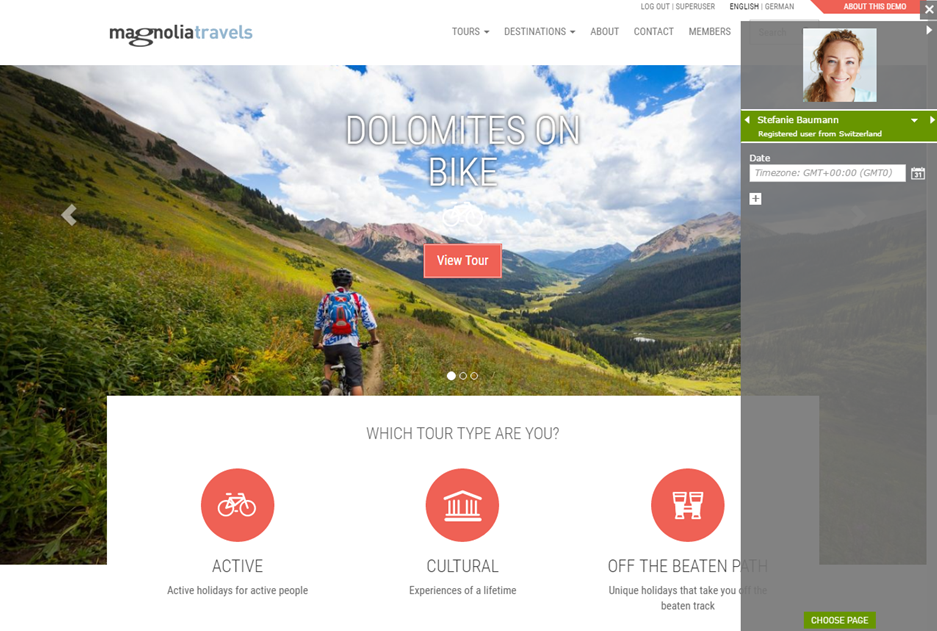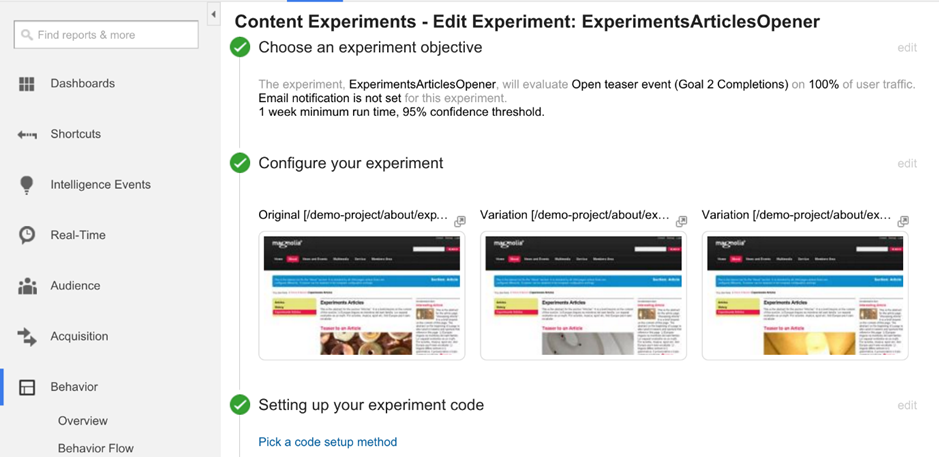Personalisation
Synthetic Personalisation is the act of using inclusive language to address large masses in a way that marks them out as individuals . It’s an approach that has been adopted by everyone from great (and not so great) historical leaders, to ignominious politicians and passionate school teachers.
Simplistic examples of this are Starbucks employees who will robotically encourage customers to “have a nice day” and websites that like to greet you with: “Welcome Bob!” (If you’re name is “Bob”, otherwise it’s a bug).
Personalisation in the digital sense has taken this concept further by allowing businesses to tailor their online communications for individual users. This is achieved not just with cleverly deployed linguistics, but by knowing something about each individual; understanding their behaviour, analysing their likes, and ultimately using this information to entice them to spend more time browsing products and converting to purchase.
The ability to serve targeted content to segmented website visitors is now a mandatory requirement of any enterprise-grade CMS (Content Management System). Across the digital software landscape there has been a strong trend over the last 5 years for the market leaders to make these features more accessible, more powerful, and cheaper to implement.
Magnolia CMS has offered personalisation capabilities since version 5.3 (released in 2015) and has recently added component-level personalisation. This article provides a high-level overview of these features and explains some related concepts.
Terminology
Magnolia provides the following conceptual features to assist marketers with defining personalisation rules and applying them to content.
Traits
Before you can serve targeted content to users, marketers need a way to distinguish between audiences. Magnolia provides “Traits” for this purpose. These are a set of variables that help identify a certain type of user. Magnolia comes with pre-defined traits for: date, country, visitor type (new, registered, or logged-in) and cookie values. Developers can extend these classes to create traits of any type desired.
Segments
By aggregating a set of traits, marketers can define a particular segment. For example, a “UK Dog Owner” segment could be defined from the following traits:
- Age >= “18”
- Country = “UK”
- Interest = “Dogs”
Personas
A persona is a representation of a real-world individual that matches a certain segment. They can help marketers visualise the type of person they are trying to reach and can allow them to build personalised pages more accurately with this in mind.
Page Variants
Once traits and segments are defined, applying these to create a personalised experience is a straight-forward process. Magnolia allows editors to create Page Variants. These are complete copies of an original page which link to and are served for a particular segment. Content editors can design the content within a page variant to be completely tailored for a specific audience.
Component Variants
Taking a complete copy a page might be overkill if you actually only want to change one word. To address this problem and to provide a more granular, manageable approach to personalisation, Magnolia released the Component Personalisation feature. This allows editors to create variants at the component level and serve these for different segments.
Page Preview
To understand what content will be served for what type of user, Magnolia allows users to preview pages as a particular visitor (persona). This allows marketers to quickly cycle through the different versions of a page and make adjustments.

Personalisation with CDNs
A common problem with adopting a personalisation strategy arises when using Content Delivery Networks. Page caches such as Limelight or Akamai typically serve over 90% of traffic for websites, significantly reducing the load on infrastructure. In a cloud hosted environment this can represent a significant cost saving and improves site performance by reducing server processing.
CDNs work by caching the first request to a page for a given time period (time-to-live). This could potentially mean that the first visitor’s page variant will be cached and served to every subsequent visitor, which is obviously not acceptable.
There is no easy, silver-bullet solution for this problem. With the wider adoption of cloud hosted servers, the requirement for CDNs to completely cache every page in a site is less important, but excluding personalised pages from CDNs feels like an inelegant solution.
If a CDN exclusion route is chosen, Magnolia provides an Advanced Cache for Personalization (ACP) module that automatically creates cached versions of pages to cover every combination created by using component variants within a page.
Analytics
Magnolia comes with a built-in Google Analytics (GA) module for swift integration with the most widely adopted analytics service on the web. This means that GA can be used for measuring the effectiveness of personalization rules.
A/B and MVT Testing
A/B and multivariate testing is the process of testing different variations of content against each other in order to find the combination that leads to the highest conversions.
A marketplace add-on is freely available that uses Magnolia page variant functionality in conjunction with Google Experiments to provide the functionality. This is a quick and free way to start running these types of tests without using a third party product such as Optimizely or Oracle Maxymiser.

Summary
Magnolia is a powerful tool for digital marketers to deliver personalised content to customers.
Priocept helps its clients to apply personalisation strategies using Magnolia. If you have any questions or would like more information please get in touch.
